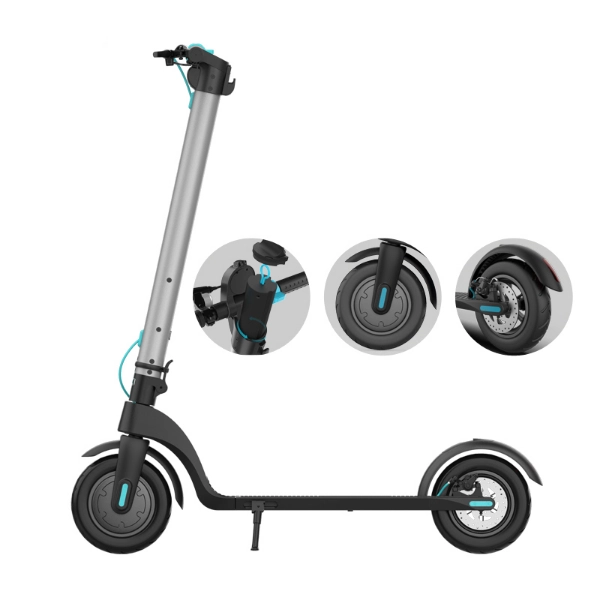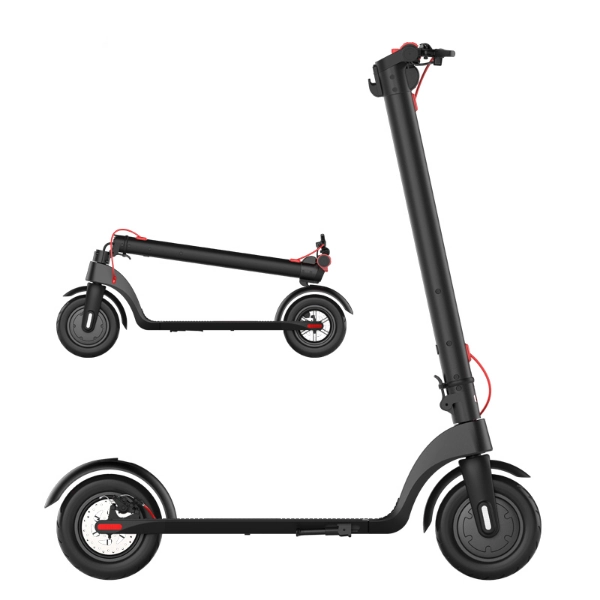Home > ABOUT KIXIN > Blog > Production Process of Foldable Two-Wheel Electric Scooters for Adults
Production Process of Foldable Two-Wheel Electric Scooters for Adults
The rise of urbanization and the need for sustainable transportation solutions have led to the popularity of electric scooters. Among them, two-wheel electric scooters stand out for their convenience and portability. These eco-friendly vehicles are not only a practical mode of transportation but also a symbol of modern urban living. In this blog post, KIXIN will share the production process of foldable two-wheel electric scooters, exploring the stages from design to assembly, and finally, to quality control.
1. Conceptualization and Design:
The journey of a foldable electric scooter begins with a concept. Designers and engineers brainstorm to create a scooter that is not only functional but also aesthetically pleasing. They consider factors such as weight, size, battery life, and user comfort. The design phase involves creating 3D models and prototypes to visualize the scooter's final form. This stage is crucial as it lays the foundation for the scooter's performance and user experience.
2. Selection of Materials:
Once the design is finalized, the next step is selecting the right materials. The frame of a foldable electric scooter is typically made of aluminum or steel for strength and durability. The choice between aluminum and steel often depends on the desired weight and cost. Other components like the tires, handlebars, and deck are made from materials that provide a balance of durability and flexibility.
3. Manufacturing of Components:
With the materials selected, the individual components of the scooter are manufactured. This includes the frame, wheels, motor, battery, and control systems. Each component is crafted with precision to ensure it meets the design specifications and performance requirements. For example, the motor must be powerful enough to provide the desired speed and torque, while the battery must have sufficient capacity to offer a long range.

4. Assembly:
The assembly process is where all the individual components come together to form the complete scooter. This is a meticulous process that requires skilled labor and advanced machinery. The frame is assembled first, followed by the attachment of the wheels, motor, and battery. The control systems, including the throttle and brake, are then installed. The assembly line is designed for efficiency, ensuring that each scooter is built to the highest standards.
5. Integration of Electronics:
The electronic components of the scooter, such as the motor controller, battery management system, and LED lights, are integrated during the assembly process. These systems are crucial for the scooter's operation and must be carefully calibrated to ensure optimal performance. The motor controller, for instance, manages the flow of electricity to the motor, while the battery management system monitors and maintains the battery's charge.
6. Software Programming:
Modern electric scooters are equipped with software that controls various functions, such as speed, acceleration, and regenerative braking. Software engineers program these systems to ensure they work seamlessly with the scooter's hardware. The software also allows for firmware updates, which can improve the scooter's performance and add new features over time.
7. Quality Control and Testing:
Before a scooter leaves the production line, it undergoes rigorous quality control checks. This includes visual inspections for any manufacturing defects, as well as functional tests to ensure all components are working correctly. The scooter is tested for performance, including speed, range, and braking capabilities. Durability tests are also conducted to simulate the wear and tear the scooter will experience during regular use.
8. Packaging and Shipping:
Once the scooter has passed all quality control checks, it is carefully packaged to protect it during shipping. The packaging process involves securing the scooter in a protective box, often with foam inserts to prevent damage during transit. The scooter is then shipped to distributors or directly to customers, depending on the sales model.
9. Customer Support and After-Sales Service:
The production process does not end with the delivery of the scooter. Manufacturers provide customer support and after-sales service to assist with any issues that may arise. This includes troubleshooting, repairs, and replacement parts. Good customer service is essential for maintaining a positive brand image and ensuring customer satisfaction.

Conclusion:
Producing an adult foldable two-wheeled electric scooter involves a combination of design, engineering, manufacturing and quality control. Each stage is critical to ensuring the scooter is safe, reliable and user-friendly. As the demand for sustainable and convenient transportation options continues to grow, the production of electric scooters will continue to be an important part of the urban transportation landscape.
